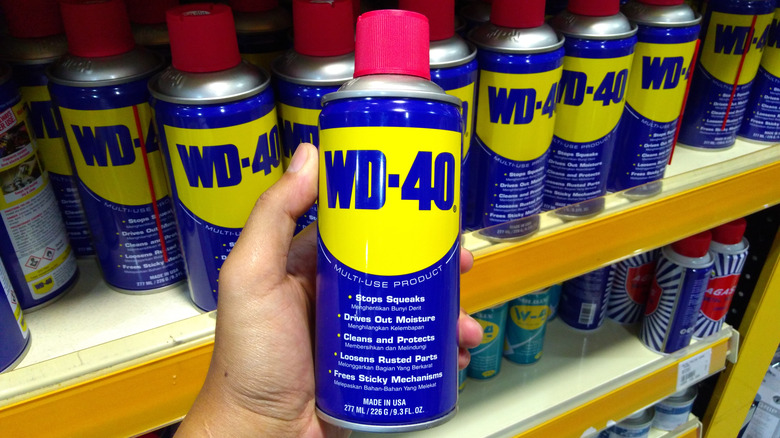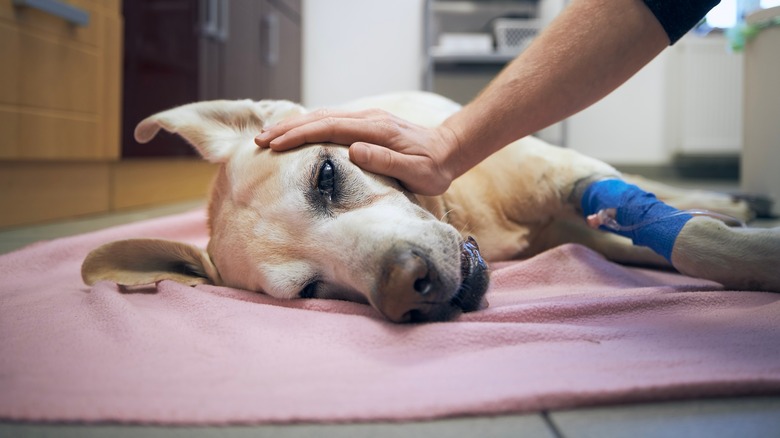What You Need To Keep In Mind Before Using WD-40 Around Pets
WD-40 is an extremely versatile and helpful product for fixing things around the house, but if you have pets, you'll want to be careful when spraying it. While WD-40's exact list of ingredients is kept secret by the company, its safety data sheet gives consumers an idea of what types of materials it contains. Some of these, including petroleum base oil and aliphatic hydrocarbon, can be toxic to dogs, cats, and humans. These ingredients may even sometimes prove fatal for pets. "Ingestion or inhalation of, or skin contact with, petroleum, petroleum condensate ... or other hydrocarbon mixtures may cause illness and occasionally death in domestic and wild animals," says the Merck Veterinary Manual.
If your pets ingest WD-40, they may experience petroleum hydrocarbon poisoning, which can affect the animal's gastrointestinal tract or lungs. To keep your pets safe when using WD-40, make sure not to apply it in places that your dog or cat has access to.
How WD-40 affects pets
Not every animal that ingests petroleum hydrocarbons will experience symptoms, but if they do it can be serious. When WD-40 is ingested, whether by humans or animals, it can cause aspiration, which pulls the toxic liquid into the lungs. If inhaled, petroleum hydrocarbons can cause coughing, dehydration, and problems with breathing. While WD-40's safety data sheet only gives information from studies based on humans, two of their ingredients are listed as having a category one aspiration toxicity. When hydrocarbons enter the lungs, pets can experience chemical pneumonitis (via PetMD). The petroleum from the product will cover the inside of the animal's lungs, causing inflammation.
If a dog or cat is experiencing petroleum hydrocarbon toxicosis or poisoning, their symptoms may include diarrhea, fever, vomiting, blue skin or gums, or an irregular heartbeat. It's crucial to take your pet to a veterinarian if they show symptoms and you think they may have come into contact with WD-40 because of the hydrocarbons it contains.
Safely using WD-40 around pets
Although not all pets who accidentally lick or swallow these toxins may be affected, it's still important to consider how to safely use WD-40. If you spray the lubricant inside your home, it's crucial to do so in an area that is well-ventilated, especially if you're using large amounts. Keeping your pet out of the room and storing your WD-40 in a hard-to-reach place could also help lessen the chance of exposure. Once you've finished using the lubricant, make sure the object it was sprayed on is not within access of your pets. For example, if you used WD-40 on a squeaky door hinge and have a large breed dog that can reach, it's a good idea to keep them in a different area of the house.
For those with curious pets that seem to get into anything, using a safer alternative to WD-40 could be helpful. Olive oil sprays are wonderful lubricants, and some companies have developed nontoxic alternatives to WD-40, such as Plant Safe Lubricants.


